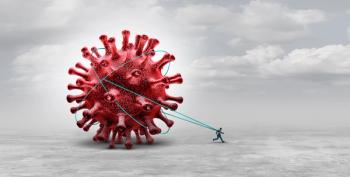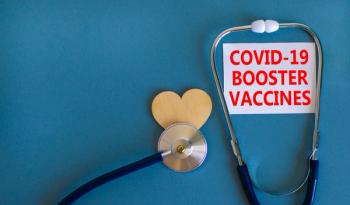
- MHE June 2022
- Volume 32
- Issue 6
Paxlovid Rebound: Rare But Real
Mayo Clinic researchers reported today in the journal Clinical Infectious Diseases that less than 1% of patients at high risk for experiencing severe COVID-19 who were treated with Paxlovid (nirmatrelvir and ritonavir) experienced a second bout of COVID-19.
“Paxlovid rebound is real and poorly understood,” tweeted
Wachter’s tweet came as word about possible
Paxlovid rebound refers to the phenomenon of symptomatic COVID-19 coming back a few days after people have finished taking the prescribed five-day course of Pfizer’s oral antiviral medication and test negative. No one is sure why it occurs.
Study results are beginning to trickle in that show that rebound is quite rare. Mayo Clinic researchers reported
FDA officials have acknowledged the problem. In an
The CDC chimed in on May 24 with an
Farley and others have noted the benefits of Paxlovid. The trial that led to the EUA showed the antiviral reduced the risk of hospitalization or death by 88% among nonhospitalized patients at high risk of developing a severe case of COVID-19. However, people enrolled in that trial were not vaccinated. The news of Paxlovid rebound has stirred up questions about whether the antiviral might have a different effect on people who have been vaccinated.
Paxlovid consists of nirmatrelvir, which acts directly on the SARS-CoV-2 virus, and ritonavir, a repurposed HIV drug that boosts the effectiveness of nirmatrelvir. As a convenient oral drug with good efficacy data behind it, the antiviral has been heralded has a key weapon in the fight against COVID-19.
One of the proposed explanations for Paxlovid rebound is that immune response to the virus is incomplete because the antiviral knocks down the viral load, so when the five days of treatment are over, the infection springs back. Paul E. Sax, M.D., clinical director of the Division of Infectious Diseases at Brigham and Women’s Hospital in Boston, has floated the idea that SARS-CoV-2 replication is drawn out in some people and that although Paxlovid reduces it, the replication ramps up again once the five-day course is over.
Paxlovid rebound has raised questions about how long people with COVID-19 who have taken the antiviral should isolate. Also unsettled is whether a second course of Paxlovid might be used to treat the rebound infection. Sax, writing in NEJM Journal Watch, said re-treatment is permitted under the EUA and is justified for high-risk patients, such as those who are severely immunocompromised. However, in the transcript posted on the FDA website, Farley said there was no evidence of benefit from longer or repeated treatment with Paxlovid. The CDC advisory also says there is no evidence of benefit from additional treatment.
Articles in this issue
over 3 years ago
Making Contraception More Availableover 3 years ago
A Surge of Biologics for Severe Asthmaover 3 years ago
Medicaid Managed Care Plans Coming Under Scrutinyover 3 years ago
ACO Update: The Pathways to Success Programover 3 years ago
Aduhelm: Great Expectations FizzleNewsletter
Get the latest industry news, event updates, and more from Managed healthcare Executive.




















































